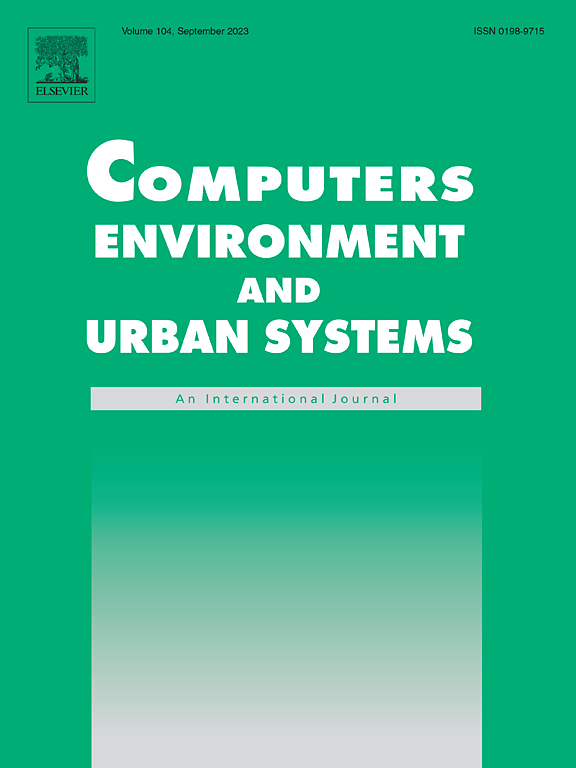战略性地标分配,减少室内导航的不确定性
IF 8.3
1区 地球科学
Q1 ENVIRONMENTAL STUDIES
Computers Environment and Urban Systems
Pub Date : 2024-10-01
DOI:10.1016/j.compenvurbsys.2024.102198
引用次数: 0
摘要
室内导航系统通常依赖于口头的转弯路线指示。在复杂的决策点,多条路径在角度上相交,而所使用的转弯语法并不能很好地区分这些角度,因此这些指示有时会很模糊。可以在转弯指示中加入地标,以减少这种模糊性。在此,我们提出了一种优化地标分配的方法,以提高路线指示的清晰度。本研究假设地标位置受限于一组预先确定的插槽。我们从所有插槽集合中选择一个最小尺寸的子集,并为其分配地标,从而解决导航模糊问题。我们的方法利用计算几何分析、图算法和优化公式,战略性地将地标纳入室内路线指示中。我们提出了一种在室内导航引导系统中优化地标分配的方法,提高了复杂决策点路线指示的清晰度,而这些决策点仅仅依靠基于转弯的指示是不够的。本文章由计算机程序翻译,如有差异,请以英文原文为准。
Strategic allocation of landmarks to reduce uncertainty in indoor navigation
Indoor navigation systems often rely on verbal, turn-based route instructions. These can, at times, be ambiguous at complex decision points with multiple paths intersecting under angles that are not well distinguished by the turn grammar used. Landmarks can be included into turn instructions to reduce this ambiguity. Here, we propose an approach to optimize landmark allocation to improve the clarity of route instructions. This study assumes that landmark locations are constrained to a pre-determined set of slots. We select a minimum-size subset of the set of all slots and allocate it with landmarks, such that the navigation ambiguity is resolved. Our methodology leverages computational geometric analysis, graph algorithms, and optimization formulations to strategically incorporate landmarks into indoor route instructions. We propose a method to optimize landmark allocation in indoor navigation guidance systems, improving the clarity of route instructions at complex decision points that are inadequately served by turn-based instructions alone.
求助全文
通过发布文献求助,成功后即可免费获取论文全文。
去求助
来源期刊

Computers Environment and Urban Systems
Multiple-
CiteScore
13.30
自引率
7.40%
发文量
111
审稿时长
32 days
期刊介绍:
Computers, Environment and Urban Systemsis an interdisciplinary journal publishing cutting-edge and innovative computer-based research on environmental and urban systems, that privileges the geospatial perspective. The journal welcomes original high quality scholarship of a theoretical, applied or technological nature, and provides a stimulating presentation of perspectives, research developments, overviews of important new technologies and uses of major computational, information-based, and visualization innovations. Applied and theoretical contributions demonstrate the scope of computer-based analysis fostering a better understanding of environmental and urban systems, their spatial scope and their dynamics.
 求助内容:
求助内容: 应助结果提醒方式:
应助结果提醒方式:


